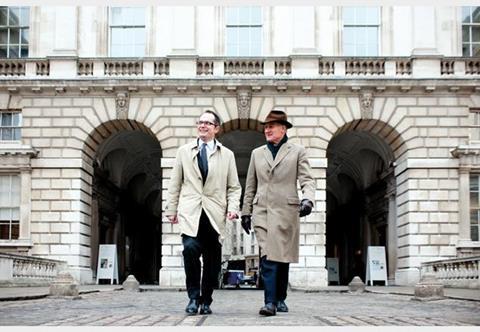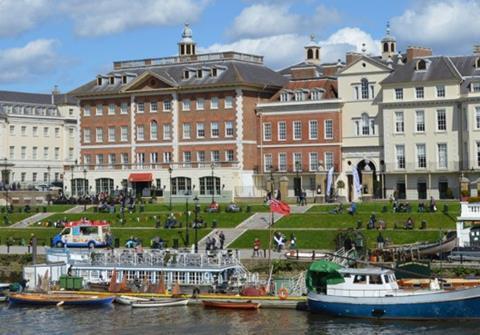Controversial classicist admits graduating from the Architectural Association with a ‘hideous’ parody of modernism

Classical architect Quinlan Terry has claimed that one reason few new-build projects are delivered in a classical style is a lack of skill on the part of design professionals.
Terry – whose work includes Richmond Riverside, Brentwood Cathedral and Queen Mother Square at Prince Charles’ Poundbury urban extension in Dorchester – said ignorance on the part of architects was a likely reason the public was not presented with classical options.
His comments came in an interview with the Daily Telegraph promoting his new book, The Layman’s Guide to Classical Architecture, in which he also suggested the government was beginning to recognise the ability of high-quality traditional design to overcome nimbyism.
Asked why so little new development was delivered in traditional style, Terry said he believed a lack of understanding on the part of professionals was principally to blame for a plethora of flat-roofed concrete projects.
“There might be some really strong-minded planning person who says it must be modernistic; it may be more likely that the architect doesn’t know how to do classical architecture,” Terry said.
“You may find that all of them think that’s the way to do it today and they have no belief of their own.”
Terry conceded that some clients may have a preference for modernist design.

Repeating advice from mentor Raymond Erith, Terry said the “highest praise” possible for a building was the perception that it had always been there. The misconception was once applied to his 1980s Richmond Riverside project, he said, when it was described as “beautifully restored 17th- and 18th-century buildings” in a walking guide.
In an evident nod to the government’s Building Better, Building Beautiful Commission and the new Office for Place, Terry noted that ministers seemed increasingly interested in the concept that places could be extended so faithfully to their original aesthetic that no one would notice or object.
‘Brainwashing’ at the AA
Terry, now 84, studied at the Architectural Association in the 1950s and said he came to recognise the school was as “full of dogma” as the church, which “brainwashed” the faithful.
He said the school refused to teach traditional design and left him in no doubt that if he did not submit a modernist proposal for his final exams, he would not pass.
“I was so cynical, I just wanted to get out of this place and get married, so I’d do anything,” Terry told the Telegraph.
He said he submitted a skyscraper that was a “hideous” parody of modernism. “They loved it,” he said. “They thought they’d got a convert.”
















13 Readers' comments